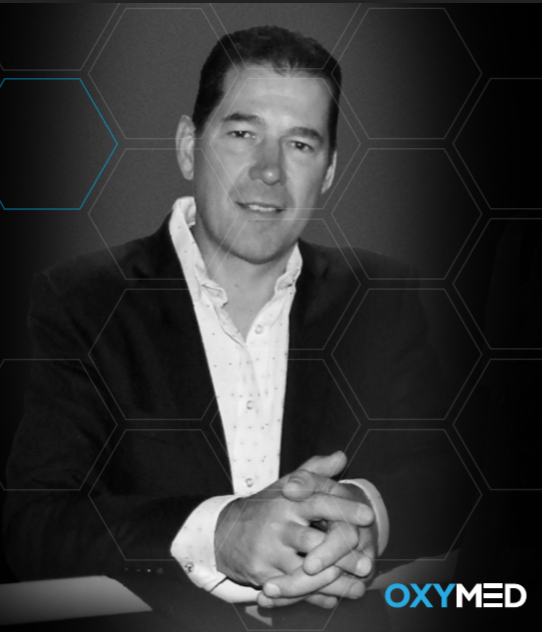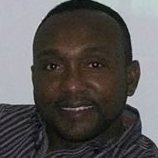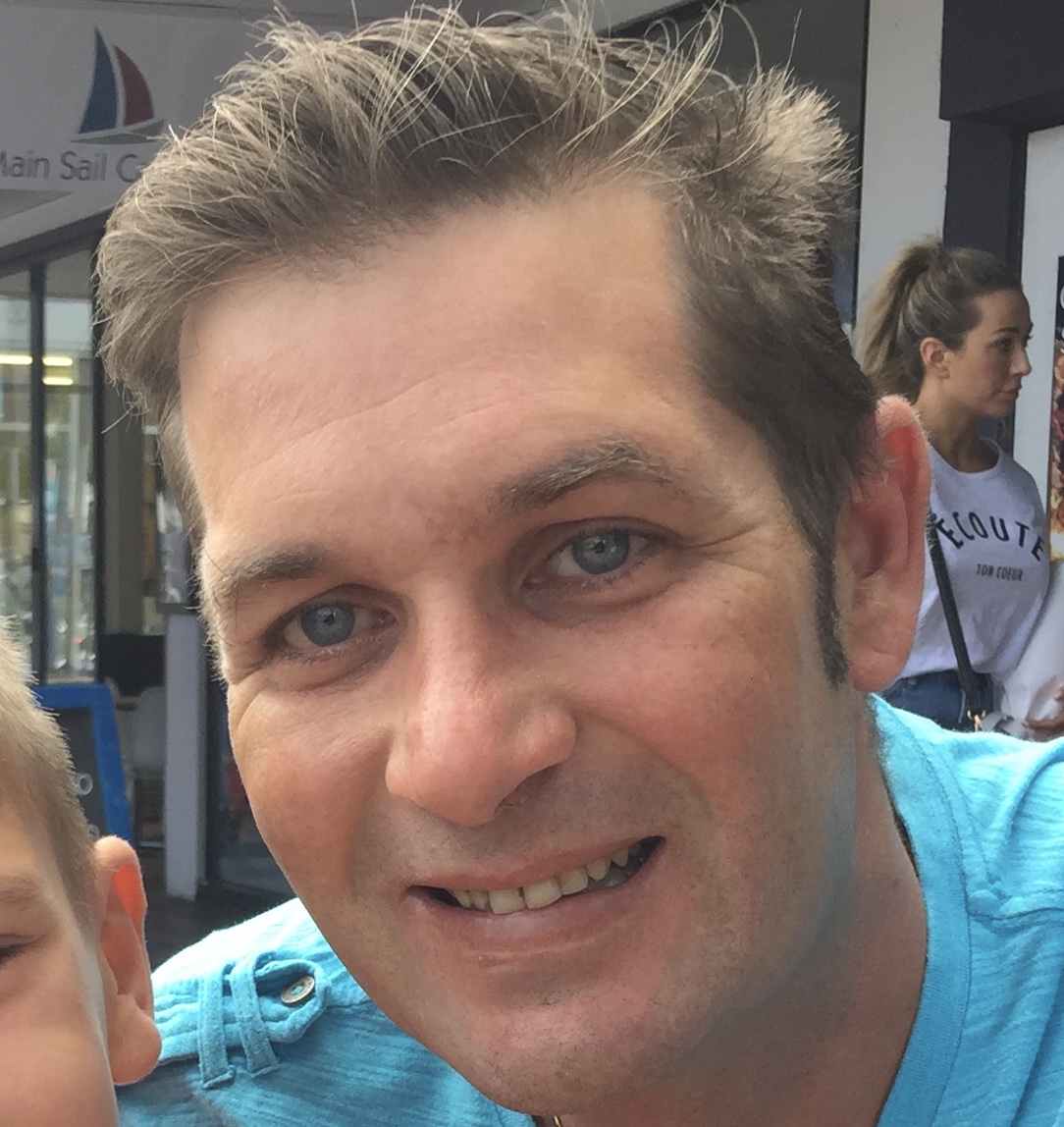Day 1 :
Keynote Forum
Manjula Ricciardi
Northland District Health Board
Keynote: Title: Botulinum toxin in post-stroke patients - Setting up a spasticity clinic: Experience and results
Time : 10:40-11:20

Biography:
Abstract:
Spasticity is defined as a motor disorder characterized by a velocity-dependent increase in tonic stretch reflexes (muscle tone) with exaggerated tendon jerks, spasticity results from hyperexcitability of the stretch reflex, one component of upper motor neuron syndrome. This may affect limb position and activities of daily living. Spasticity contributes to disability in post stroke patients with a frequency of 41.6%. Botulinum toxin is a neurotoxin that acts on the neuromuscular junction at the presynaptic site. It inhibits the release of acetylcholine, thus leading to muscle weakness and reduced muscle tone. Botulinum toxin treatment in post-stroke upper and lower limb spasticity is a safe and effective .Procedure to decrease muscle tone and increase the range of motion. Post-stroke rehabilitation is important to reduce disability and Botulinum toxin type A injections is considered a gold, Standard treatment for focal spasticity.
Keynote Forum
Malcolm R Hooper
Oxymed, Australia
Keynote: Hyperbaric oxygen therapy combined with (LOKOMAT) robotic exoskeleton assisting neuroplasticity in brain and spinal cord injury
Time : 11:40-12:10

Biography:
Abstract:
Keynote Forum
Tajjallah Bibi Shamim Khan
SEND Coordinator at Al Maaref Private School , Al Maaref Private School
Keynote: Cognitive Behavior Therapy, ABA Therapy, Motivational Therapy, Psycho Education, Person Centered and Solution Focused Therapies.
Time : 10: 20 - 10 : 45 am

Biography:
I have a relentless and intense curiosity for what makes people tick and how they overcome adversity, I always focus on holistic development. Over the years I've developed a talent for helping people see problems and solutions more clearly, and in a way that inspires real change.
She enjoy mentoring students, young professionals & adults alike.
She worked with clients with a range of issues including PTSD, depression, anxiety, OCD, Schizophrenia, Special needs children, workplace stress, anger management, parenting education and supports for adult children with suicidal attempts. She incorporated strategies from 12 step recovery programs and encourage her clients to take personal responsibility for their choices and actions while “letting go of the outcome.” She saw adults, high school students, and older adolescents dealing with issues such as bipolar disorder, depression, anxiety, trauma and grief.
Her educational background includes Master in Psychology from University of Punjab and 2 years Diploma in Clinical Psychology from Gulf Institute of Modern Technology, Islamabad, Pakistan. Her extensive knowledge of principles, methods and procedures for diagnosis, treatment and rehabilitation of physical and mental dysfunctions has proved her as a valuable asset for her clients and organization.
Abstract:
She strives to offer the most effective therapy tools and techniques available for overcoming Depression, Anxiety, Panic, Stress, Anger, Addiction And Relationship Issues.
She loves what she does and it shows, she’s easy to work with and highly skilled at building a powerful therapeutic relationship, which predicts the best outcomes. She helps to cope, accept, control and thrive. It all depends on what people are grappling with and aiming for in therapy.
Psychotherapy is a journey of discovery that helps to create the type of person we want to be. I strongly feel that healing can take place only in the context of a relationship in which someone experiences safety, compassion and understanding. It is through this process that people can awaken in themselves the possibilities for growth and transformation, often hidden by the negative effects of trauma, depression, anxiety, anger and loss. In my treatment approach, I communicate to my patients that they are not alone in their suffering, that they have the strength to tolerate the uncertainties of life, and they do have choices even if they feel stuck and alone. For me, an essential part of the therapeutic relationship is to connect with patients on an emotional level so that they can really feel that someone sees possibilities in them for growth and change despite the struggles in their lives.”
Keynote Forum
Ghulam Rasool Mashori
University of Medical & Health Sciences for Women, Pakistan
Keynote: Lisinopril an ACE inhibitor and its effect on Insulin Release.
Time : 11:00- 11: 20 am

Biography:
Dr. Ghulam Rasool Mashori is working as Professor & Director, in Peoples University of Medical & Health Sciences for Women, Pakistan. Dr Mashori completed PhD from the Faculty of Medicine, University Kebangsaan Malaysia in 1994. He has successfully completed many Short & Long Courses/Trainings in Management Sciences. He holds number of experiences in the Area of Quality Control & Research at NIH, Islamabad, Pakistan, also worked as Deputy D.G. (Pharmacolvigilance), in Drugs Control Organization, Ministry of Health. He has been Director, Central Drugs Laboratory, Ministry of Health Government of Pakistan. He has been teaching/ supervising M.Phil & PhD fellows in Jinnah Postgraduate Medical Center Karachi Pakistan. Mr. Mashori has been keenly involved in Research Work and is playing Supervisory Role at MPhil & PhD levels. He holds Managerial & Administrative experiences with very reputed Organizations. Dr. Mashori also worked as Director National Institute of Management (NIPA). He has been efficiently involved in delivering talks on International Forums. He delivered talks in USA & Europe in various conferences till the end of 2017. He has published more than 30 research papers in reputed Journals and has been serving as an editorial board member of reputed Journals.
Abstract:
Hypertension is a persistent raise of resting systolic (≥140mmHg) & diastolic (≥90mmHg) BP (Carretero & Operil, 2000). In normal individuals BP ranges from 120/80mmHg to 140/90mmHg (
Keynote Forum
Ali Siahposht-Khachaki
Keynote: Single-neuron activity in the nucleus accumbens on the extinction and reinstatement morphine-induced conditioned place preference: the key role of the NMDA and AMPA receptors in the reward- associated behaviors
Time : 11:30-12:00

Biography:
Department of Physiology and Pharmacology, Mazandaran University of Medical Sciences, Ramsar International Branch, Sari, Iran
2 Neuroscience Research Center, Shahid Beheshti University of Medical Sciences, Tehran, Iran
Abstract:
The mesocorticolimbic dopaminergic system projecting from the ventral tegmental area (VTA) to the nucleus accumbens (NAc) is necessary for the initiation of opioid compulsive usage and reward-associated behaviors. Activation of AMPA and NMDA glutamatergic receptors in the nucleus accumbens probebly is a part of the mechanism of drug related reward. In this work, we investigated on the effects intracerebroventricular administration the AMPA (CNQX) and NMDA (AP5) antagonist on both extinction and reinstatement of morphine –induced conditioned place preference (CPP).
Materials and methods: All animals passed CPP procedure and afterwards, received intracerebroventricular administration of different doses of D-AP5 or CNQX during extinction period or reinstatement phase. The conditioning scores were recorded by Ethovision software. After behavioral test in the reinstatement day, the prefrontal cortex, nucleus accumbens and hippocampus were then removed and the levels of c-fos, CREB, and phosphorylated-CREB were measured using western blotting. In vivo single unit recording after the extinction period were performed in urethane anesthetized rats. After 20 min of baseline recording from accumbens neurons the non-effective dose of morphine (1mg/kg; s.c.) were performed and the spontaneous firing were continued to be recorded for 40 min.
Results: Our results showed that administration of D-AP5 or CNQX significantly shortened the extinction (maintenance) of morphine CPP. Besides, injection of these antagonists before administration of priming dose of morphine (1 mg/kg, subcutaneously) following extinction period decreased the reinstatement of morphine CPP in extinguished rats. However, the effect of CNQX on maintenance and reinstatement of morphine was more significant than D-AP5.In the molecular session ICV microinjection mentioned antagonists decreased c-Fos level and CREB/pCREB rati and also,the electrophysiology session ICV microinjection these antagonists increased baseline firing of the nucleus accumbens neurons.
Conclusion: These findings suggested that glutamate receptors involve in extinction and reinstatement of morphine-CPP, and antagonism of these receptors may be useful for faster extinction of drug-induced reward and attenuation of relapse.
Keynote Forum
John M Baumann
Keynote: Guaranteed to Show You how to Successfully Re-invent YOURself
Time : 1:00-1:15 pm

Biography:
Dr. John M. Baumann inspires and helps real people to live their lives to the fullest, and even embrace their life-changing event, with the goal of uncovering their life’s purpose (JohnBaumann.com). He is an internationally-recognized inspiring success speaker. In 2002, at 41 years old, working as the top attorney for a public company, he was diagnosed with Parkinson’s disease. From 2005 until 2014, he taught law at the College of Business at the University of Louisville to over 1,000 undergraduates. He was selected the most inspiring professor. He wrote a book entitled, “Decide Success - You Dead Yet. He earned his Juris Doctorate degree from Cornell Law School after graduating Summa Cum Laude with a Bachelor’s Degree in Business Administration from the University of Massachusetts, School of Management. As an attorney, he has passed the bar and practiced law in Texas, Louisiana and New Jersey before becoming General Counsel of a NASDAQ listed corporation headquartered in Kentucky
Abstract:
If you have decided that you desperately and passionately commit to transform yourself no matter how much effort, time and sacrifice that it will take, keep reading, this information is for you.
As the well-known expression goes, “The definition of insanity is doing the same thing over and over again and expect that you are going to get a different result.” Many of us have never learned this lesson. We hold on to familiar approaches to life issues when deep down inside we know that we will get the same result, although unhealthy, one that we are actually comfortable with. Doing something different takes either a very brave person or very desperate person. I recommend that you take the bravery route and not wait for you to become desperate, some call it “hit rock bottom.” Being exposed to someone who is brave enough to transform, or is in the process of transforming, his or herself, a mentor, makes a tremendous difference because you realize that it is possible to succeed, “If they can do it, so can I.” Seek out a mentor.
Keynote Forum
Abbas Nikravesh
Faculty of Medicine, North Khorasan University of Medical Sciences
Keynote: Genetic Background Influences Immunity-Related Genes in two Iranian Ethnical Multiple Sclerosis Groups
Time : 1:20-1:45 pm

Biography:
Abbas Nikravesh obtained his PhD from Karolinska Institutet in Stockholm (Sweden) at 2008. He is Assistant professor in Molecular Genetics in North Khorasan University of Medical Sciences, Bojnurd, Iran. He is interested in the teaching of some Genetic courses such an Medical genetics which he currently more focus on it and established a Genetic Counseling Center to more involved with Genetics diseases. His favorite research area is Genetics of Multiple sclerosis; so far, He supervised more than fifteen theses of Master and PhD students of Genetics major in this subject which ended to promising results and 20 interesting articles.
Abstract:
Multiple Sclerosis (MS) remains a poorly-understood autoimmune disease in the central nervous system (CNS) with unknown etiology and pathogenesis. Iranian population consisted of different ethnical groups with a specific history and genetic background having different prevalence of MS and responses to drugs.So, to find the role of genetic background on the expression of immunity-related genes, we are trying to evaluate the expression of STAT3, lnc-DC and THRIL in MS patients and healthy controls of two different ethnicities including Sistani population in the south-east and Kurmanj population in the northeast of Iran.
To assess the effect of ethnicity on the expression levels of the immunity-related genes, blood samples were obtained from two different cohorts including Sistani and Kurmanj MS patients and their relevant controls. The expression of the selected genes were assessed by Real time PCR method.Surprisingly, in stratification for ethnicity, our results showed that although the expression level of THRIL significantly increased in Kurmanj MS patients (P=0.03), this lncRNA down regulated in Sistani patients (P=0.028) in comparison with their relative healthy controls. Moreover, lnc-DC did not show any significantly different expression in both Kurmanj (P=0.33) and Sistani patients (P=0.54).
In conclusion, our results showed that besides the role of lncRNAs in the pathogenesis of MS through different mechanism, to be more successful in effective MS therapies based on personalized medicine, genetic background is an important factor which must to be considered.
Keynote Forum
Tran Thi Hanh
Can Tho Medical College
Keynote: Older adults with stroke and their family caregivers: Needs in post-stroke care
Time : 1:50- 2:20 pm

Biography:
Tran Thi Hanh got MPH qualification from Mahidol University after 10 years working in a district hospital in Cantho City. Her researches in hospital nursing management, nurse education, and traffic accidents were published in journals. Graduated from Mahidol University for her Dr.PH in nursing, she becomes the pioneer in that field in Vietnam and interesting in post-stroke care. She desires to improve the quality of post-stroke care in the city and to initiate education for public health nursing in Vietnam.
Abstract:
Stroke causes serious consequences to its victims, loss in their families and society. Stroke prevalence in Can Tho City is at an alarming rate. Assessing the needs of stroke patients and their family caregivers is important for healthcare workers in understanding problems from the caregivers’ perspectives. Objectives: To define the factors related to needs patients and their caregivers in post-stroke care of in Can Tho City, Viet Nam. Method: A cross-sessional study design was applied in interviewing 125 stroke patients and their family caregivers in Can Tho City, Vietnam. Of the patients, male 62%; married 83%; aging mean of 63; primary school 64%; farmer 44%. Of the family caregivers: female 77%; married 83%; aging mean of 46.80; spouses of 42%; primary school 53%; farmer 47%. With Cronbach α was at least 0.78, the tests applied consisted of t test; Z test, ANOVA, and Chi-square at p=0.05. Results: For patients’ needs in post-stroke care: 19% on basic care, 56% on prevention for complications, 52% on rehabilitation, 66% on counseling; prevention of spasticity 72%; need on services for physical therapy 86%; 22% with unidentified needs. The factors related to patients' needs include risky health behaviors, health problems last week, attitude on their situation; self-care activities. The factors related to family caregiver needs: marital status and relationship to patients. Recommendations: Setting up the network among healthcare services to keep on managing post-stroke care; more counseling and supporting from health sectors and community and more studies on for application of traditional medicine on post-stroke care.
Keynote Forum
Dr Mohammed Alobaidi
Mental Health at the Ibb University, Yemen
Keynote: The Nature of Electroencephalogram (EEG) of a Sample of Children with Autism Spectrum Disorder (ASD)
Time : 2:30-3:00 pm

Biography:
Completed PhD in mental health from Baghdad University 2003. And I got a degree (Professor) in 2012. worked Professor of mental health and clinical psychology at several universities. Clinical psychotherapist and worked in several hospitals, Then she served as Dean of the Psychological Counseling Center in Ibb, Yemen and Head of Mental Health at Majd Specialist Hospital. More than 21 published scientific research. And wrote 6 books in the specialty. Participated in a number of scientific conferences. Many psychological services provided in the field of humanitarian and voluntary work, especially psychological support to groups which suffered war and conflicts.
Abstract:
The current research aimed at testing the following hypothesis: the disorder of the electrical waves of the brain can be a main cause of (ASD).
The sample of the research consisted of 30 children with ASD diagnosed and selected by five medical specialists in the light of the criteria (DSM-5) . The age of the selected children ranges between 4 and 10 years. The children were divided into three groups according to the severity of the disorder: (13) children with low ASD, (10) children with moderate ASD, and (7) children with severe ASD. The electrical activity in the brain (EEG) was recorded in two different situations - the first while the children were awake and the second while they were asleep.
The most noticeable result of the current research was that children with ASD have a low level of communication in general, including language and social skills. the results of the current search indicated the existence of a direct correlation between the intensity of disturbance of the electrical activity of the brain and the severity of ASD. The results of the current research can open the door for further experimental studies to test medicines appropriate to modify the troubled electrical activity of people with autism spectrum disorder to find the effective medicine.
Keynote Forum
Jose antonio gomez rodriguez
National Open and Distance University UNAD - PicologÃa - COLOMBIA
Keynote: Psychotherapeutic Considerations: Cerebral Behavior Against Duel As Psychopharmacological Support In Adultez
Time : 3:05-3:20

Biography:
José Antonio Gómez Rodríguez is a graduate in Psychopedagogy from the Universidad del Atlántico in Colombia, he developed a Master's degree in Human and Multidisciplinary Behavior at the University of Buffalo, USA. He studied doctoral studies in social research at the Catholic University of Argentina and the I.S.A. of Havana - Cuba. He currently develops studies and research in psychology at the National Open and Distance University of Colombia being the founder of the research group Neurounad2000 that specializes in the search of experimental psychotherapeutic processes related to neurosciences.
Abstract:
The psychotherapeutic considerations: brain behavior against grief as psychopharmacological support in adulthood, is a research proposal that involves scientific methods within the psychotherapeutic dispositions that currently are developed in front of patients who experience pathologies related to the different experiences that from the duel can develop a subject; this is how the present work tries to determine the organization of individualized psychological and psychopharmacological therapy (Psychiatry) based on the results that exposes the brain activity of a subject and sustained by the neuronal disconnections suffered by an individual suffering a stage of grief, developing pathologies such as: depression, anxiety, stress and even reach suicide. Similarly, it is intended to demonstrate and raise awareness that the changing brain activity of those who suffer a grief should be treated psychopharmacologically distinct, individualized and with clinical supports that contribute to improving the quality of life that a patient experiences during this stage.
Keynote Forum
Johannes J. van der Wiel
Ketocloud and Ketosoft, research and development organisation
Keynote: Ketogenic Diet An engineer’s observation of the prescription, administering and maintaining of the Ketogenic Diet and possible solutions to obstacles experienced by many users.
Time : 3:30 - 4:00 pm

Biography:
Johannes van der Wiel has been actively involved in the administering of, and studied the Ketogenic Diet over the last 15 years. He is the founder of Ketocloud and Ketosoft, research and development organisations focused on facilitating the prescription and administering of the Classical Ketogenic Diet and the MCT Ketogenic Diet. Using mobile cellular technology he has created an infrastructure to monitor patients progress and adjust the therapy remotely as required. He developed this technology originally for epilepsy patients, however today the technology can be used wherever the Ketogenic Diet is used for.
Abstract:
The Ketogenic Diet is an old therapy used to treat patients with epilepsy. This therapy has been accepted as one of the most effective, least invasive and with less side effects than many other treatments. This therapy is based on creating the state of ketosis by manipulating the intake of specific nutrients without the use of pharmaceuticals.
It was known that food had an effect on epilepsy at the time of Hippocrates of Cos, evidenced by his writing on the “sacred disease”. At the time of the Egyptian Pharaohs there was likely knowledge of a connection between food and epilepsy.
Studies by John Hopkins, Mayo Clinic and others, show that the success rate of this therapy is approximately 1/3 seizure free, 1/3 marked reduction, and 1/3 no effect. The popularity of this therapy has periodically waned and gained over the years, partly because of the promise of more effective alternatives, partly because of the difficulty of maintaining the therapy. Maintaining the therapy has historically been difficult due to the need for vast amounts of nutritional data and daily complex calculations. In addition it was difficult for physicians to prescribe and monitor progress and take anticipatory action to avoid a therapy failure.
Using 21century mobile tools we have developed a technology capable of effortlessly calculating meals in accordance with physician prescribed variables using data from industry accepted databases. This new technology can calculate meals, provide feedback to the physician and physicians can remotely modify calculation parameters in response to feedback received.
Keynote Forum
Adam Mate
Keynote: The amazing life of Adam Mate – Brain aneurysm and stroke survivor
Time : 12:10-12:40

